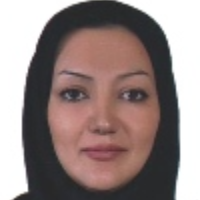Evaluation of narrow band UVB therapeutic effect on chronic mucocutaneous graft versus host disease lesions: A case series
Author(s):
Abstract:
Background
Chronic graft versus host disease (cGVHD) is a major cutaneous complication of bone marrow transplantation (BMT). Although milder forms of this process may be associated with a lower incidence of tumor recurrences, it is mandatory to develop a more efficient and less harmful therapeutic approach.Methods
This case-series study enrolled 7 patients diagnosed with chronic mucocutaneous GVHD. We divided the patients into three major categories based on the type of skin lesions: sclerodermoid, lichenoid, and mixed. Patients received several packs of narrow band UVB (NBUVB) phototherapy. Each pack contained ten sessions of NBUVB (311 nm) with a duration of at least ten seconds and a fixed radiation dosage (6 mj/cm2) during the treatment.Results
There were 3 patients diagnosed with lichenoid skin lesions, 2 with sclerodermoid lesions, and 2 had mixed cGVHD lesions. During the follow up period one patient was excluded due to a lower respiratory tract infection. The mean response ratio was 42% with a mean satisfaction level of 5.5 out of 10. The lichenoid group had the best, most rapid response. There were no serious adverse effects reported.Conclusion
Narrow band UVB phototherapy is useful as an adjuvant therapeutic modality in cutaneous lichenoid and intraoral cGVHD with no serious adverse effects.Keywords:
Language:
English
Published:
Iranian Journal Of Dermatology, Volume:19 Issue: 1, Spring 2016
Page:
21
https://magiran.com/p1609105
مقالات دیگری از این نویسنده (گان)
-
Lessons from Flood Disaster Management of Khuzestan Province, Iran, Based on the Experiences of Policymakers: A Qualitative Study
Roya Habibi Arejan, Maryam Shabany, , Shahriar Ghashghaei, Mahkameh Abbaszadeh, Vafa Rahimi-Movaghar
Iranian Red Crescent Medical Journal, Oct 2023 -
Adopting and Adapting Clinical Practice Guidelines for the Use of Baseline MRI in Acute Spinal Cord Injury in a Developing Country
Seyed Farzad Maroufi, Sina Azadnajafabad, Ghazaleh Kheiri, Seyed Behnam Jazayeri, , Heshmatollah Ghawami, Maryam Kheyri, James S Harrop, Michael GFehlings, Vafa Rahimi-Movaghar *, Collaborative Authors Group
Archives of Neuroscience, Jul 2023


